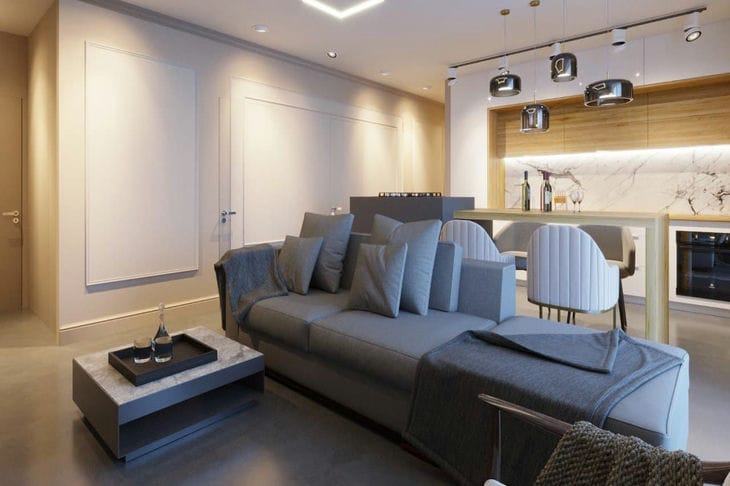Helpful acoustic insulation tips from an interior design expert
Acoustic protection in the interior is one of the key points when designing a room.
As a rule, it is necessary in small apartments, where sound can be reflected and create a hum and echo.
There are currently many different materials and technologies on the market for active and passive acoustic insulation that will help solve this problem. Let's get acquainted with some of the most effective and useful tips for acoustic protection in the interior, says Yulia Tychino .
Passive acoustic insulation
Passive acoustic insulation is a method that uses materials to block noise that passes through walls, floors and ceilings.
Some of the materials used for passive insulation include rock wool, glass wool, mineral wool and other high density materials.

They block noise that passes through walls and other surfaces, preventing it from spreading into the common space.
One simple way to solve this problem is to use sound-absorbing materials such as carpets, curtains, thick cotton rugs, etc. You can also use furniture to reduce the amount of sound in the room. For example, chairs and sofas with thick upholstery can help absorb sound.
Active acoustic insulation
Active acoustic insulation is a method that uses technological solutions to block noise in a room.
Devices used in active acoustic insulation are capable of creating anti-noise to block sound that passes through walls and ceilings.
These devices are installed inside and outside the room and can work both independently and in combination with other materials for passive acoustic insulation.
One of the main examples of active acoustic insulation is the use of sound panels. They can be installed on both walls and ceilings and have special mechanisms that can block sound in the room.
Design solutions
Structural solutions are a method that helps improve acoustic insulation in a room.
It involves the use of special designs for walls, ceilings and floors that can reduce the amount of sound passing through the wall.
For example, you can use double walls with a gap between them or thick glass with careful installation.
You can also use special sound-absorbing structures, such as synthetic panels that are installed on the walls. They not only reduce the amount of sound, but also contribute to better soundproofing of the room.
Soundproofing systems
Soundproofing systems are a method used to control the sound in a room. It involves installing special soundproofing systems that can control the sound level in a room.
These systems can work in conjunction with active and passive acoustic insulation to achieve better results.
For example, you can install sound panels inside the room that will work in conjunction with the soundproofing system to create an optimal sound level.
Acoustic protection in the interior is a key aspect in creating a comfortable life.
Passive and active acoustic insulation, design solutions and soundproofing systems are just some of the methods that can help improve the acoustics in an interior.
Using these methods in combination with each other can lead to optimal results in counteracting noise and creating a comfortable space inside the room.
Previously we talked about using bright colors in the interior .
